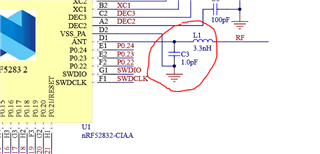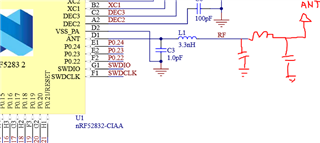Hi,
I am doing some research for the antenna matching of the NRF52832. Now the product specification v1.4 on page 551 states:
"A matching network is needed between the RF pin ANT and the antenna, to match the antenna impedance (normally 50 ohm) to the optimum RF load impedance for the chip. For optimum performance, the impedance for the matching network should be set as described in the recommended package reference circuitry in Reference circuitry on page 545 above."
But the link is dead. Ive tried searching for documents that could be the one that they are trying to link to. however in none of the documents I can find the 'optimal load impedance' of the NRF52. So, What is the optimal load impedance of the NRF52832 (-CIAA)?
Kind regards,
Ruben





 I get an "Page not found"
I get an "Page not found"